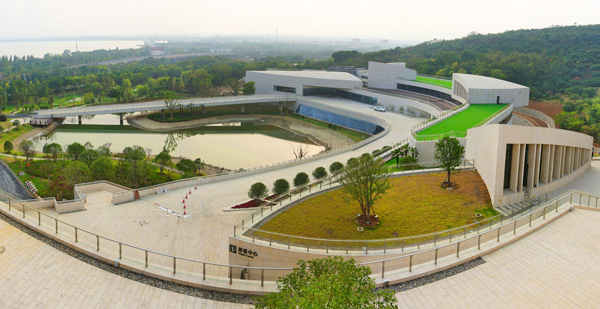 |
| Helyu museum |
Helyu is an old capital city that sits in the village of Helyu, on Mashan St, alongside Taihu Lake in the western part of Wuxi. It dates back to the first year of Helyu's reign in the sixth year of Jing emperor of the Zhou, in 514 BC, giving it a 2,500–year history. In March 2013, the site became a national historical and cultural site under State protection, and, in December, was named a national archaeological park by the State Cultural Heritage Administration.
A museum at the site, on 6.3 hectares of land, which cost 300 million yuan and took three years to finish construction, opened to the public in 2012. It sits alongside Yuebai Bay, near Mashan Isle, at the center of the Helyu City Park and will be a landmark project of Wu culture and a key archaeological research site.
The museum has a graceful design and resembles a phoenix, suggesting that it is a new lease on life, with a design concept of merging in with mountain. It also has a wonderful layout, with the bulk of the architecture fitting into a quarry in the mountain. The museum offers views of different terraces and has many functions.
It offers relic displays, archaeological research, science education, and entertainment, in two sections - a main building, with the exhibition area of about 17,000 square meters, and an annex as a Wu culture communications and research center, covering an area of about 10,000 square meters.
The exhibition area is subdivided into seven display areas - 3D Cinema, Archaeological Hall of Wu, Interactive Experience Hall of Great Helyu, Hall of Passing the Torch, Hall of Ritual Music in the Spring and Autumn Period, Hall of Helyu Achievements, and Hall of the Charm of Ancient Wu. The communications and research center is mainly for entertainment, catering, conferences and accommodation services.